“Birds were created to record everything. They were not designed just to be beautiful jewels in the sky, but to serve as the eyes of heaven”-Suzy Kassem
A Flock of Rosy Pelican
In the small city Bharatpur, of the Desert State Rajasthan, lays an Oasis for Birds: Keoladeo National Park (locally Ghana). Despite its reduced size of merely 29 square kilometers, the park is a haven for thousands of rare and endangered migratory birds arriving from different countries of the Eastern Palearctic region. Nearly, one third of its area is wetland, fed by monsoon and the rivers, Gambhir and Banganga. Artificially created in 1850, the semi-arid biotype took its name from the temple of the local deity Keoladeo (Shiva) which is located near the centre of the reserve.
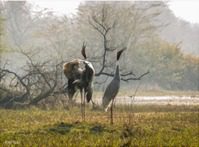
Conservation Status
The world heritage site, before being designated as a Bird Sanctuary in March 1956, was the private duck shooting reserve of the Maharaja of Bharatpur. It was declared a Ramsar site in October 1981 and a National Park in 1982. Subsequently, in the year 1985, it was notified as a UNESCO world heritage site.
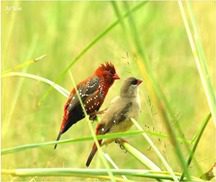
Faunal and Floral Diversity
The park’s location in the gangetic plain, makes it an important breeding ground for large number of migratory and resident birds. The most common waterfowl are Gadwall, Shoveler, Teals, Tufted Duck, Painted Stork, White Spoonbill, Darter, Warblers and Babblers. The threatened avifauna includes Dalmatian pelican, Spot-Billed Pelican, Lesser and Greater Adjutants and Cinereous Vulture. The magnificent dance of Sarus Crane, is the major tourist attraction. The mammalian fauna comprises of Nilgai, Chital, Sambhar, Bat, Civet, Golden Jackal and Stripped Hyena, which can be easily spotted. Carnivore leopard is an occasional visitor of the park. Whoops of Rhesus Macaque and Gray Langur can be heard throughout the daylight. In total, the man-made, man-managed wetland reports accommodating nearly 366 bird’s species, 27 mammal’s, 50 fish’s and 13 species of snakes. The floral diversity has generous 379 species. There is also a small turtle pond near the Keoladeo temple.
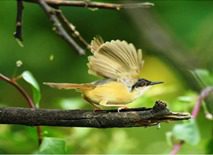
Issues
Everything in the sheltered area revolves around water availability. Often, a slight disturbance of the annual rainfall degrades habitat quality, resulting in the decreased population of migratory bird species, altered breeding pattern and their time of stay. The other major threats are the influx of feral cattle from the nearby villages, invasive African cat fish (Clarias gariepinus) in the water bodies, growth of obnoxious weed Prosopis juliflora, anthropogenic pressure from the adjacent areas and the pollution from highway passing nearby.
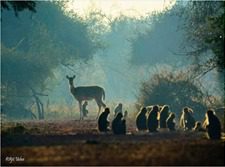
Timings
The Protected area being the travel goal for ornithologists all over the world sees nearly one lakh tourist inrush annually. The accommodations are easily available within the precinct of the park. Although throughout the year, the reserve remains open for the visitors from sunrise to sunset, the best time to visit is from October to March, when there is high influx of migratory birds. Automobiles are strictly banned to enter inside. Facilities of rickshaw, bicycle and tourist guide is easily available at the entrance. A lonely walk is much recommended.
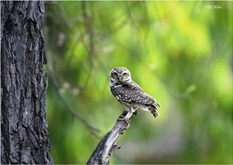
How to reach?
Nearly 220 km from Delhi, 200 km from Jaipur and 56 km from Agra, the park can be easily reached by a private taxi, bus or train.
Despite of its artificial creation, vulnerability and small size, the Keoladeo National Park continues to remain a Birder’s Paradise. Away from the hustle-bustle of city life, the miniscule drop of greenness in the arid state of Rajasthan is a place to retreat and purge in the calm. As the noted poet Robert Lynd writes “In order to see birds it is necessary to become a part of the silence”.
Author is PhD Scholar, Forest Research Institute, Dehradun
Images Courtesy: Dr. Ajit Uchoi, IFS (Former Director, Keoladeo National Park)

